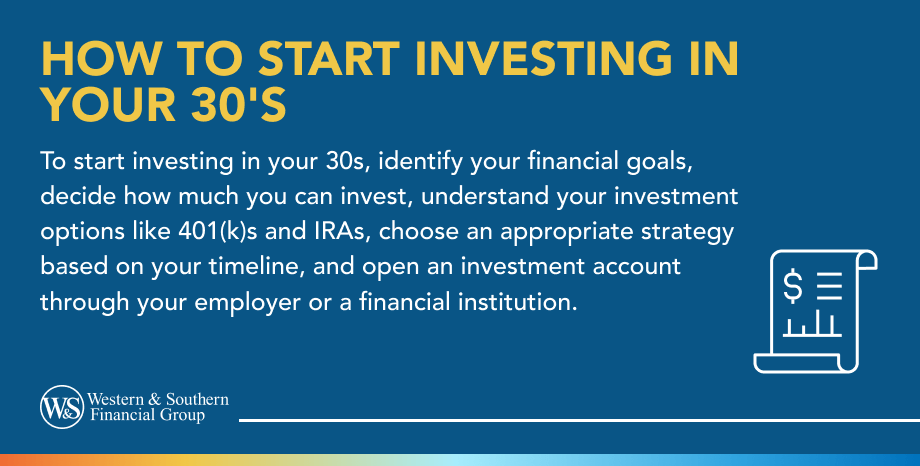

Key Takeaways
- Start investing early to benefit from compound growth over decades. Even small, regular contributions can grow significantly long-term.
- Have clear investment goals like retirement, home buying, or college savings to guide what accounts to open and contribution amounts.
- Consider contributing 10-15% or more of income if aiming for retirement. Use calculators to estimate needs.
- Tax-advantaged accounts like 401(k)s and IRAs help money grow faster than taxable accounts.
- Stocks suit long-term goals but bonds and stable assets are better for near-term needs. Adjust investments based on time horizon.
Whether you want to set yourself up for a comfortable retirement or simply build assets that you can draw on as needed, investing early in adulthood can help make it easier to achieve your long-term goals. Because every dollar you put into the market early in your career has more years of potential growth, you can invest with little money and potentially see growth later in life.
Here are some items to consider as you learn how to start investing in your 30s, including the basic types of accounts available to people who may not have a large sum to start with.
Identify Your Investment Goals
While Social Security benefits can help to supplement your income after you leave the workforce, chances are they won't be enough to live on. In fact, payments from the program make up about one-third of retirement income for the average older adult, according to the Social Security Administration.1 With a dwindling number of companies offering pensions, that puts the onus on workers to fund the lion's share of their retirement funds.
Preparing for retirement isn't the only reason you may want to open an investment account. Your goal could also be to help accrue enough for a down payment for your first home or to have a source of funds for your child's eventual college education. Understanding why you're putting away money can help you choose the right investment vehicle for you and develop an asset mix that suits your timeline.
Just keep in mind that investments cannot guarantee growth or sustainment of principal value, and they may lose value over time. Past performance is not an indication of future results.
Decide How Much to Invest
For someone who enjoys good health, retirement can last a few decades or more. That means you may need significant account balances to help ensure that you don't outlive your assets.
As a general rule, many experts suggest that 20-somethings start putting away 10% to 15% of their pre-tax income — which includes employer's matching funds — so they can retire comfortably in their mid- to late-60s. If you start later, you may need to increase that percentage to make up the difference. To get a more personalized figure based on your current savings and expected budget, a retirement calculator can be a valuable tool.
That doesn't mean you should get disheartened if you're unable to meet that mark, however. Because of the compounding effect of market returns, every dollar you invest at a relatively young age may be worth more than the dollar you saved during your last year in the workforce. In other words, whatever money you can put into an account — even if it's $1,000 or less — is likely better than investing nothing at all.
If you're working toward more near-term investment goals, you may want to start with your target amount (adjusted for inflation) and figure out how much you'll need to set aside each month to reach that goal. A compound interest calculator can provide a simple way to gauge whether you're on track, estimating the effect of interest-bearing accounts as well as reinvested stock market returns.
Investing even small amounts now can help your wealth grow over time. Invest In My Future
Understand Your Investment Options
Choosing where to put your money typically depends on your investment objectives and time horizon. Fortunately, it's relatively easy to find accounts with low to zero minimum-balance requirements.
Here are some options you may want to consider when learning how to invest:
401(k) Plans
If you're fortunate enough to work for an organization that offers a 401(k) or similar plan, it's usually a great way to start building your retirement savings. What makes a traditional 401(k) plan so powerful is that any earnings generated by your investments are tax-deferred. Plus, many employers provide matching funds that can help to fuel your savings.
Individual Retirement Accounts
Unlike workplace-sponsored plans, IRAs can be opened by anybody with earned income. They also offer more choice than 401(k)-style plans, which generally have a relatively small selection of investment choices. The tax advantages of a traditional IRA are similar to that of workplace plans. Earnings are tax-deferred.
Taxable Accounts
While 401(k)s and IRAs have obvious benefits for retirement planning, you could find yourself paying a 10% early withdrawal fee if you take out funds before age 59½. If there's a good chance you'll need to tap your funds before that, investing through a brokerage house or other financial firm may offer greater flexibility. You'll have to invest with after-tax money and pay applicable taxes on any earnings, but there are fewer rules stipulating when you can dip into your account.
Pick an Investment Strategy
Although the U.S. stock market has generated annualized returns of roughly 10% over the past century, there have also been plenty of years when its value has dipped. That's why stocks are generally better suited for investors who don't plan on tapping their funds for several years, as the risk of a negative return is lowered.
If you're several decades away from retirement, putting money into a 401(k) or IRA with a stock-heavy asset mix may allow you to benefit from the greater growth potential of equities compared with bonds or depository accounts. You also may have enough time to ride out any downturns in the market over that extended period. For those who are getting closer to retirement — or investing for more near-term needs — opting for more stable investment choices can help to mitigate the risk of losing principal.
Opening an Investment Account
If your employer offers a 401(k), opening an account is simple as contacting your company's human resources department and filling out the necessary paperwork. With an IRA, you have several options, including accounts sold directly through mutual fund companies, as well as many banks and life insurance companies. Often, these financial institutions allow you to invest with little money, although you'll want to check if there are any fees for carrying balances below a given threshold.
These days, you have even more choice when it comes to purchasing stocks, bonds and mutual funds in a taxable account. In addition to brokerage houses and other traditional financial services providers, consumers can download trading apps that allow you to buy and sell securities right from your phone. However, novice investors in particular should consider the risks of speculating on particular stocks, especially when using apps that "gamify" investing.
If you'd like to speak with a knowledgeable professional about how to start investing in your 30s, contact a financial representative today. They can provide a personalized look at your financial situation and help you begin.
Choose the best investing strategies to maximize your long-term gains. Invest In My Future
Sources
- Fact Sheet SOCIAL SECURITY . https://www.ssa.gov/news/press/factsheets/basicfact-alt.pdf.



























